Dairy is a household staple, but as category inflation soars, what’s the outlook? How long will it be before dairy becomes an expensive treat?
“The days of cheap dairy are over,” predicts Wyke Farms MD Rich Clothier, in a stark assessment of a sector that has long stubbornly resisted inflation. This time, however, things seem different. Recent months have seen dairy producers hit by rocketing energy and input costs, exacerbated of course by the wider global impact of the war in Ukraine, forcing dairy prices to record highs.
In July, low-fat milk prices were up 34% on last year, whole milk up 28%, butter 27% and cheese 18%, according to the ONS. The picture was even more shocking when drilling down into specific SKUs. One pint of milk now costs 89p in some of the major supermarkets, according to Assosia data, an increase of 62% since January 2022. And it’s as much as £1.05 in supermarket convenience stores.
Looking through the supply chain, it’s easy to see why. At Wyke Farms, one of the country’s leading cheddar producers, milk prices are up 20p per litre since the start of the year – “which roughly speaking, means another £2,000 per tonne of cheese”, Clothier explains. “So, if you keep 15,000 tonnes of cheese in stock, that’s another £30m you suddenly need.”
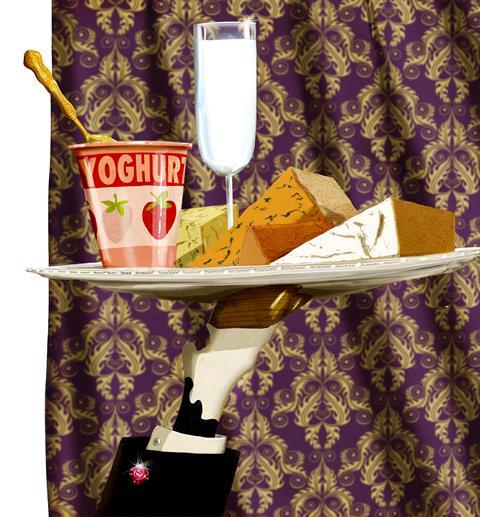
And there is no doubt shoppers are noticing, in many cases changing their shopping habits as a result. An exclusive poll of 1,000 consumers by Harris Interactive for The Grocer shows 86% of shoppers were aware of price increases in the supermarkets over the past six months. Almost a third are either “very” or “extremely concerned” about the rising cost of dairy.
It’s no surprise considering Brits are now paying the same for two pints as they were for four pints at the start of the year, The Grocer’s analysis shows. And with the average four-person household purchasing 9.3 pints of milk a week, according to Defra, it’s a crippling hike many are struggling to bear.
Some are therefore wondering whether dairy can remain a household staple for much longer. Could it instead become a luxury?
Price flashpoints
Dairy farmers and suppliers have often bemoaned retailers for keeping prices artificially low to drive footfall. The 2015 dairy crisis – which saw farmers take cows into supermarkets in protest at rock-bottom farmgate and retail prices – was one of many flashpoints over the past decade.
Things are very different now, however, and dairy is increasingly seen as a bellwether for wider food price inflation across the supermarket sector. Indeed, the category’s largely successful efforts in getting price rises through in the mults amid a cost of production squeeze this year were even held up in May as an example of best practice by struggling free-range egg producers – after they too called for improved returns in the face of rocketing on-farm costs.
“I think there will still be some more inflation to come. And in terms of our cost inflation, there will also be more”
The reason behind this success is down to the combination of soaring farmgate prices – driven by rampant input cost inflation – coupled with a tighter than normal supply of milk, and what Arla UK’s MD Ash Amirahmadi describes as the dairy sector’s unique “transparency” around farmgate pricing.
That transparency means hard, commodity-led data on why dairy processors have chosen to raise or lower farmgate prices “is published every month, and retailers can see that the money is going back to farmers”, he explains.
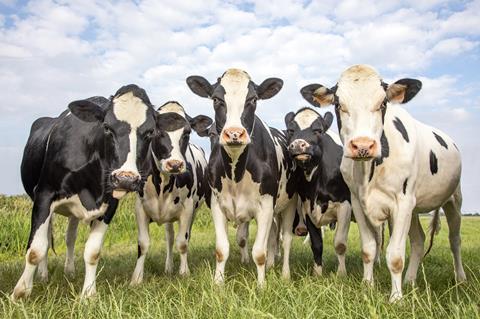
That’s just as well, given the harsh financial challenges the farming sector has faced over the past year-and-a-half. And they only accelerated when Russia invaded Ukraine in February.
Global milk supply was already tight before the war, suggests John Allen, director at Kite Consulting, who says the commodity price of milk “would probably have risen” to a degree this year anyway due to already soaring global fertiliser and feed prices.
But the subsequent disruption caused by Russia’s invasion of its neighbour significantly accelerated the situation.
Agricultural inputs
In addition to feed and fertiliser inflation, the rising cost of fuel, energy, labour, packaging and even finance meant AF’s Aginflation Index in April reported the average cost of agricultural inputs across the UK farming sector had risen by 46% in the 18 months to March 2022.
Ahead of AF’s next update in October, its CEO David Horton-Fawkes has already warned that on-farm challenges look set to get even worse amid “brutal” energy inflation and the continuation of “significant” wider input cost price increases.
“The stark fact remains in sharper focus than ever that maintaining food supplies for the nation is only possible, let alone profitable, with inputs at reasonable costs and fair prices paid by the supply chain and consumers,” he says.
Dairy has been at the sharp end of these fiscal obstacles, with Müller Milk & Ingredients joint CEO Rob Hutchison finding it “hard work just keeping everything running” in recent months.
“There’s no doubt there have been huge challenges on input costs, both on our side [in manufacturing] and on the farm side,” he adds, warning that potentially “frightening” increases in energy costs, expected this winter, are on a “different level”.
Staff costs too are on the up, with Clothier at Wyke Farms now “staring down the barrel of six-monthly wage increases” in order to keep hold of increasingly sought-after staff.
These kinds of increased overheads “simply cannot be absorbed internally”, adds George Heler, MD of Cheshire cheesemaker Joseph Heler (and a former Tesco buyer).
Fortunately, for dairy farmers at least, much of these rising costs have (so far) been reflected in improved returns.
The average farmgate price for GB milk producers hovered between 28p per litre and 31ppl from 2017 to 2021 but has risen rapidly since summer 2021, according to AHDB analysis of Defra data.
However, from September 2021 to July 2022 (the date of AHDB’s most recent dataset), the average UK farmgate milk price rose by 44.3%, from 31.57ppl to a record 45.57ppl.
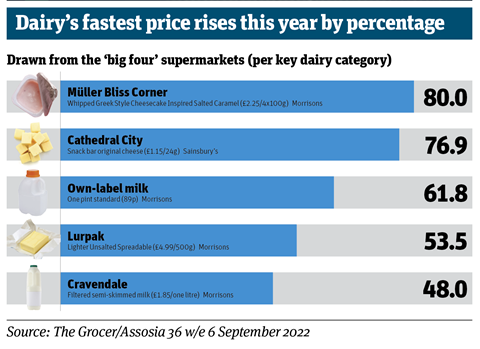
And as The Dairymen went to press in early September, most of the UK’s main milk processors were paying near to or even above 48ppl – at least 50% higher than just a year ago.
But for the dairy suppliers that sit between the farmgate and the supermarkets, the current inflationary situation within the supply chain has often meant bruising price negotiations with retailers still desperate to dampen down retail price inflation.
Many of those negotiations have been combative, suggests Sheazad Hussain, the joint MD of recently merged milk processor Medina Freshways (see p24), which pushed through a market-leading price increase of 50ppl in September – more than double the price it was paying its farmers at the start of the pandemic.
“Most people acknowledge and understand that costs have gone up, but the issue in certain areas is that milk has been used as a loss leader [for so long],” which had created resistance from some buyers, Hussain believes.
In many cases, this is rippling back through the supply chain. So resistant have some milk buyers been to react to the cost of production squeeze, that both Tesco and Sainsbury’s – which, like Waitrose, The Co-op and M&S, have their own dedicated aligned milk pools – came under regular fire from dairy farmers during the spring over a perceived failure of their contracts to keep up with soaring farmgate prices.
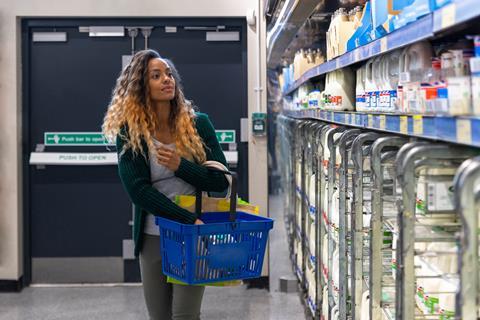
The Grocer reported in March that many disaffected farmers, including about 15% of Sainsbury’s milk pool and others supplying Tesco, had resigned due to aligned milk prices lagging behind the market average – prompting NFU dairy board chair Michael Oakes to suggest some retailers hadn’t reacted quickly enough to these rises. “They have failed to read the market,” he added.
The unrest ultimately led both Sainsbury’s and Tesco to make big price increases of around 4ppl to 46ppl in July, followed by a move to 47ppl in August.
But even without these hurdles, it is clear most suppliers now acknowledge the challenges on farm and have been increasing their prices, while retail buyers have – albeit reluctantly in some cases – agreed to pass on at least part of those extra costs to consumers.
“Most people understand costs have gone up, but the issue in certain areas is that milk has been used as a loss leader for so long”
So much so one major supermarket chain was involved in more than 100 price negotiations this summer in the dairy category alone, according to one industry source.
And a look across the main dairy categories shows there has been significant price inflation across the mults since the turn of the year.
In addition to the big price increases for one, two and four pints of standard own-label milk, prices for brands such as Cravendale have risen at least 48% since the turn of 2022, while butter products such as Lurpak are up to 54% more expensive, and best-selling cheese brands such as Cathedral City have seen some variants increase by 77% since January (see box, p6).
Indeed, research by The Grocer using Assosia data shows a total of 4,894 price increases across dairy’s four main categories in the big four retailers alone since January, and just 710 decreases.
“Conversations [with buyers] have not been easy,” admits Arla’s Amirahmadi. And retailers have not been saying “fine, we’ll just do it”, when presented with a price increase request, he stresses. “However, what we’ve consistently done is be open and worked with our customers, and that has built trust.”
The concern for many now is, with the cost of living crisis expected to escalate over the coming months, retailers may not be as understanding if suppliers continue to ask for more money.
The pressure facing supermarkets is clear, with research showing any translation towards further retail price increases could threaten to drive consumers away from the category.
Shoppers are increasingly open to switching brands, and even categories, says Celia Ward, Harris Interactive research manager, with 34% of those surveyed open to trying cheaper alternatives (including dairy-free products).
End in sight?
Inevitably, dairy prices will not keep rising for ever. And many processors and farmers are already receiving enough to cover their cost of production, suggests Allen at Kite.
That doesn’t mean retail price increases will stop here, though – with all the signs pointing to further retail inflation over the coming months. Heler believes “we are some way to reaching peak price within the industry due to the lag effect between milk price increases and a rise in production”, of which there is currently little sign. Heler is expecting a continued need to review pricing with the supermarkets over the winter months.
Amirahmadi agrees, adding there are ongoing conversations with retailers about further upward price moves and there will be a “lag effect” where retailers have accepted price increases and will then pass it through.
“So, I think there will still be some more inflation to come,” he adds. “And in terms of our cost inflation, there will also be more to come.”
As Müller’s Hutchison says: “It’s hard enough to even predict next month. We’re in new territory, because we’ve not seen these kinds of farmgate milk prices before.”
Looking further ahead, however, he seems more confident that wherever prices end up, they won’t come down again any time soon.
He points to “structural” changes in the industry, things like recent hikes in wages that are typically more resistant than input costs to deflationary trends. “I think the new milk price standard will be higher than the standard we’ve seen over the past 10 years,” he predicts.
This is necessary, according to Medina Freshways’ other joint MD, Bali Nijjar, who argues the price of milk must come to rest at a higher level to make up for many years when it was undervalued. He believes a four-pinter should be as high as £1.75 if everyone is to make sufficient money out of the product.
“So for milk, at least, it’s still too cheap, we’re way off the stage of it being unaffordable [to shoppers].”

Perhaps one of the greatest factors in whether Nijjar’s hope of sustained higher prices comes to pass will be the levels of supply into the market. As it stands, GB milk production is set to finish the 2022/23 season between 1% and 3.8% lower year on year, according to AHDB estimates, largely a product of myriad soaring input costs.
Global production is also forecast to be down about 0.5% year on year, AHDB adds – mainly due to lower grass quality caused by hot, dry weather in Europe in particular. As a result, the outlook at farm level is “really uncertain for the rest of the year”, says Kite’s Allen.
“Maintaining food supplies for the nation is only possible with inputs at reasonable costs”
A wide range of farmers have probably been improvident with the sourcing of increasingly unaffordable feed sourcing and “will suffer financially”, he adds.
NFU deputy president Tom Bradshaw agrees. “We were very concerned at the start of spring that farmers were using less fertiliser [due to its soaring cost] and we were very concerned about subsequent grass growth and its impact this winter,” he says.
Given, too, the impact of the dry summer on grass growth, many farmers had been forced to use winter feed stocks early, so there was now a “big question mark about what will happen” over the winter months, Bradshaw adds.
“With feed prices set to remain high there is real uncertainty,” he warns, and “big question marks” over winter milk production levels, with any drop in volumes having the potential “to drive more inflation” at the till.
Massive opportunity
But the question marks are not just over annual production this year, but the long-term future of the entire British dairy herd, with 7% of polled dairy farmers telling the NFU they planned to leave the industry within two years due to the stress of producing milk in the current climate.
With costs “at every level of manufacturing” rising to unmanageable levels, “we’re certainly in for a really rough winter this year”, says Wyke Farms’ Clothier.
“And the worrying thing is, if we have power cuts, three-day weeks or factory shutdowns due to a lack of energy, that’s going to have a big impact on the food distribution chain,” he says.
As a result, it will be essential new prime minster Liz Truss and Defra secretary Ranil Jayawardena “hit the ground in top gear, and address serious issues – particularly on labour and food security – which we’ve taken for granted for too long”.
But Clothier – not to mention Amirahmadi and Hutchison – is also keen to stress there are positives to dairy in the mid-term at least, driven by rising global demand.
“There is a massive opportunity for quality British dairy around the world,” Clothier says. He also points to some of the most productive relations between the supermarkets and suppliers for many years, a particular bonus given the conditions in which they have been working.
“We’ve all become more collaborative from farmer to processor to retailer and understand more about each other’s businesses.
“I’m seeing some really positive signs with retailers working closely with us in a partnership kind of way – rather than you kick me in the nuts and I’ll kick you in the nuts.”
That’s no doubt a situation any reasonable person would like to avoid. And in the face of more cost hikes and potential declines in consumption, minimising further pain could become all but essential.
Dairy inflation: could the category become a luxury in the UK?
- 1
 Currently reading
Currently readingDairy inflation: could the category become a luxury in the UK?
- 2
- 3



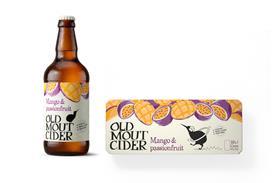



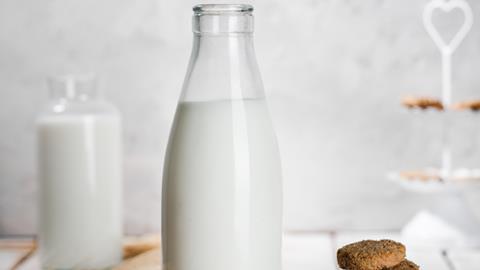




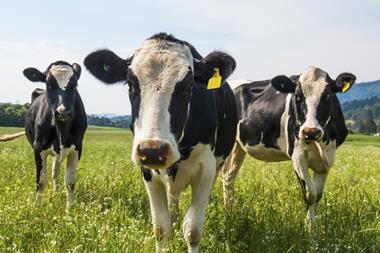
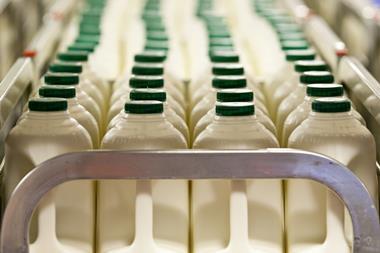

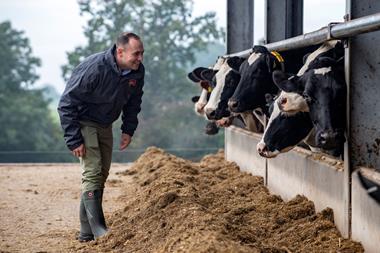
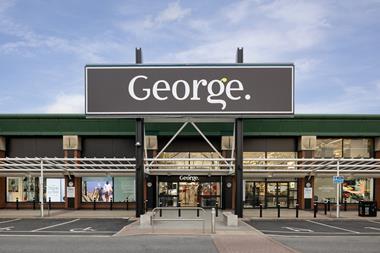
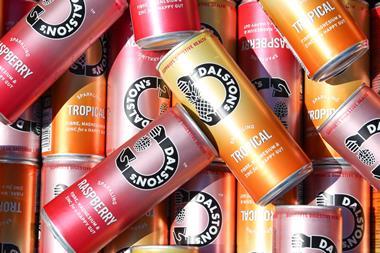

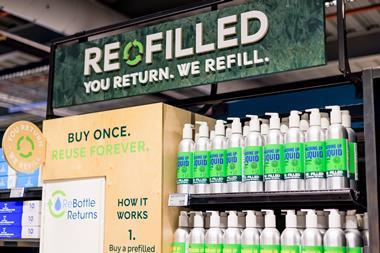


No comments yet